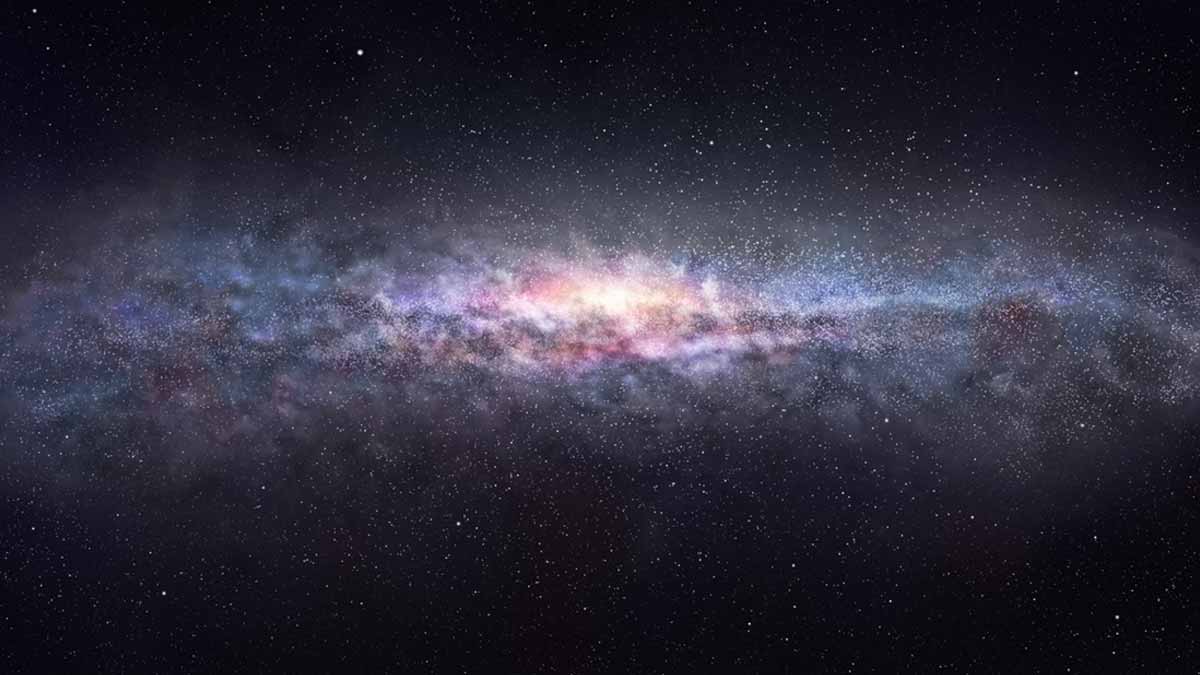A whisper of light rewrites how quickly young galaxies grow. In a distant galaxy, astronomers traced oxygen from an age once thought too early for metals. That single line carries the story of fast star birth, quick death, and bold change. It suggests the first systems matured at a sprint, while theory walked. The result invites new models, since the signal stays clear through dust and time, and it points to speed.
Why early oxygen resets the cosmic clock
The target is JADES-GS-z14-0, whose light left 13.4 billion years ago when the Universe was under 300 million years old. Oxygen matters because massive first stars forged heavy elements, then spread them through explosive deaths, so metals mark rapid cycles. The 88-micron fine-structure line slips through dust and remains bright across vast distances, which turns it into a trusted tracer.
ALMA delivered the decisive detection, and Sander Schouws led one of two international teams behind it. In this distant galaxy, the oxygen line implies at least two stellar generations had already lived and died. That compresses chemical timelines that once allowed hundreds of extra millions of years before such enrichment. Earlier hints at redshift 10 suggested quick growth, yet proof waited for sensitivity this deep in the far infrared.
How a distant galaxy produced a clean oxygen signal
ALMA measured a strong oxygen line and pinned the distance with a margin near 0.005 percent. The array found no dust continuum at the same spot, so the dust-to-stellar mass ratio stays below 0.2 percent. Combined with the line’s brightness, the gas-phase metallicity sits near one fifth of the Sun’s value, which is high for such an early epoch.
Line width reveals ionized gas moving at about 70 kilometers per second. That motion implies a dynamical mass close to one billion solar masses, so a substantial dark-matter halo already shaped the system. The picture links composition, motion, and mass with unusual clarity. Because the oxygen line remains clear while dust stays faint, the measurements set a clean baseline. They also anchor early galaxies on a firmer scale for chemistry and structure.
Fast chemistry, JWST support, and reionization clues
The chemical speed surprised Stefano Carniani, since models predicted far less metal at this time. Estimates indicate about ten times more metals than some simulations allow, so theory must add faster bursts or better mixing of supernova debris. JWST backs the case with a 7.7-micron excess, which aligns with strong optical oxygen and hydrogen lines and supports the metallicity.
Faint ultraviolet features suggest roughly ten percent of ionizing photons may escape into intergalactic space. That escape helps carve ionized bubbles, so Lyman-alpha light can cross a mostly neutral cosmos during cosmic dawn. Evidence from GN-z11 pointed the same way, yet JADES-GS-z14-0 pushes the clock nearly 200 million years earlier. In a distant galaxy, that earlier timing raises pressure on feedback models and gas-flow recipes that run too slowly.
The synergy matters. ALMA delivers reach in the far infrared, while JWST supplies detail across the mid-infrared and optical bands. Together they cut uncertainty, and they turn a hint into a benchmark. With both signals, the argument grows strong enough to reshape early-time assumptions.
Rethinking growth models around a distant galaxy
Classic hierarchical pictures favor gradual growth from small, metal-poor seeds. Many simulations assume slow accretion, modest star-formation rates, and gentle enrichment, so chemically mature systems should appear after 500 million years. Oxygen this early squeezes that window and leaves less room for slow build-up, because metals already mark repeated formation cycles.
Two paths stand out. A top-heavy initial mass function would tilt births toward massive stars that forge oxygen fast and die young. Dense, gas-rich halos could also collapse earlier than expected, recycle material quickly, and drive short, powerful bursts. Velocity broadening near 70 kilometers per second and a billion-solar-mass scale fit either path, while the low dust limit shows metals can rise before dust piles up.
That low dust fraction, below 0.2 percent, matters for how we read far-infrared signals and estimate mass. It also explains why the oxygen line looks so clear. Because dust remains faint, the tracer keeps its strength, and calibration stays simpler at extreme redshift.
What comes next, and how surveys will test the pace
Future JWST spectroscopy will target carbon and nitrogen lines to complete the elemental budget. Higher-frequency ALMA work will hunt faint dust and refine the metal-to-dust balance. Instruments on the Extremely Large Telescope should resolve clumps a few hundred light-years wide, so teams can test whether strong outflows already cleared central regions and shaped structure early.
Survey plans now expand. ALMA intends to scan dozens of redshift-12 candidates for oxygen to learn how common these conditions are. If many show similar signals, today’s case shifts from rare to representative, and models must bake in faster tracks as standard. If few appear, timing and environment set special rules. Either way, the outcome moves theory forward. As Rychard Bouwens noted, ALMA and JWST together now reveal first-wave galaxy growth in action. In a distant galaxy, that partnership turns a single line into a new clock for cosmic dawn.
A final look at what the signal already changed and why it matters
Oxygen in JADES-GS-z14-0 arrives from an age once labeled too soon for metals, so timelines shrink. The detection fixes distance to tight limits, sets dust below 0.2 percent, and places metallicity near 0.2 solar. It also ties motion to a billion-solar-mass scale, while JWST agrees on key lines. Because the case is coherent, the lesson stands: a distant galaxy can grow up fast and still leave a readable trail.
